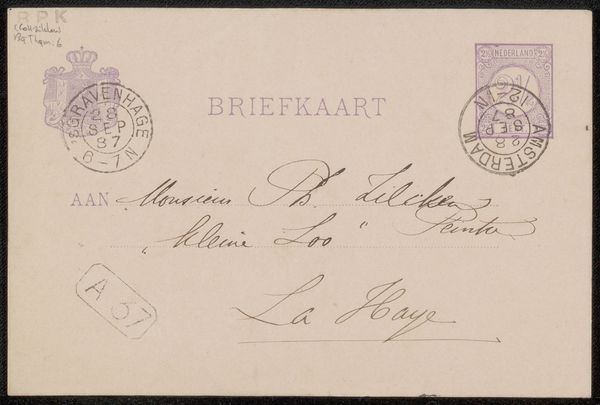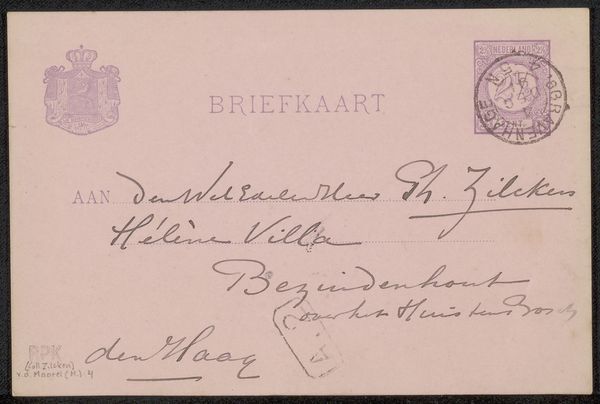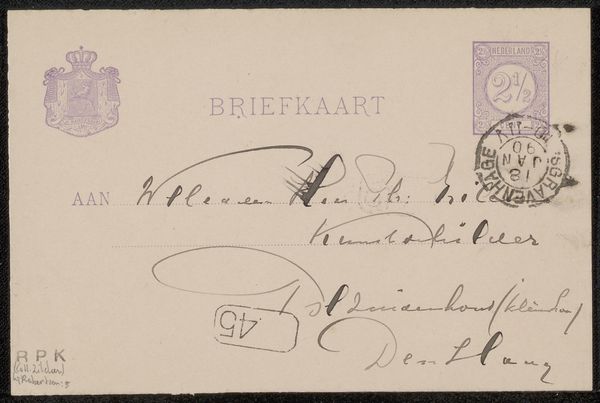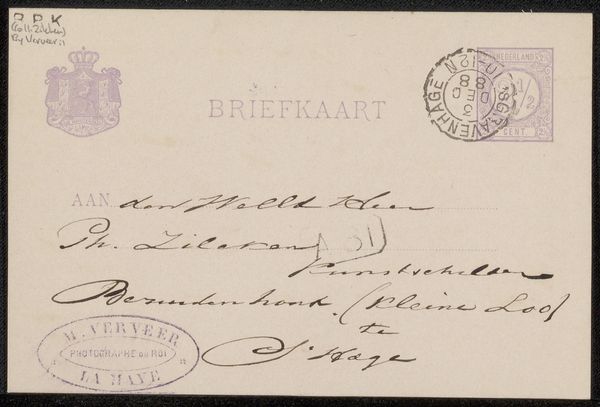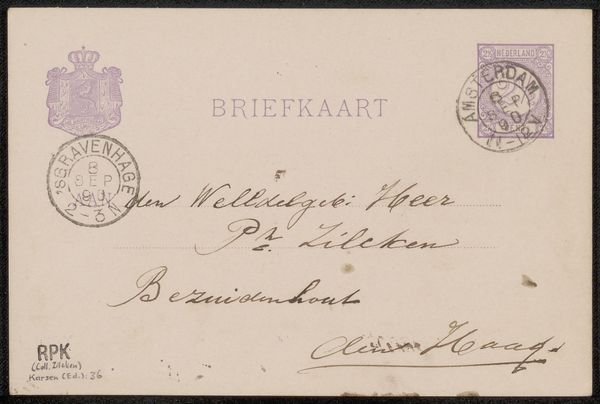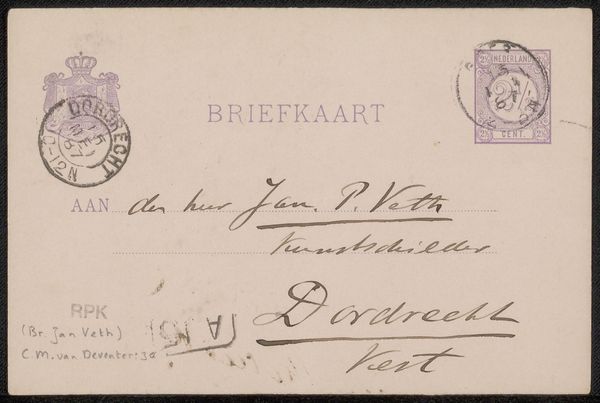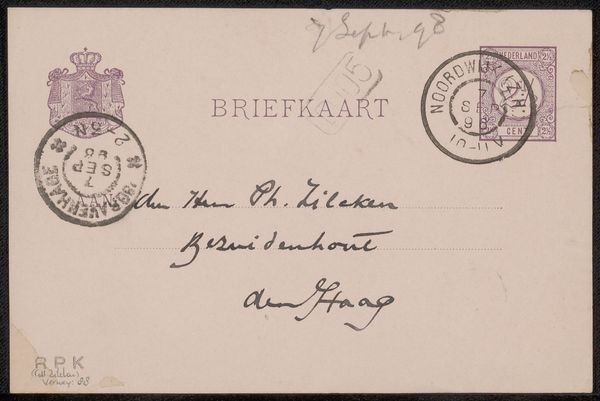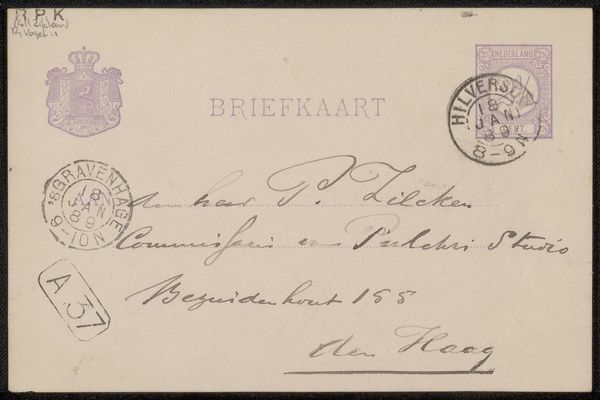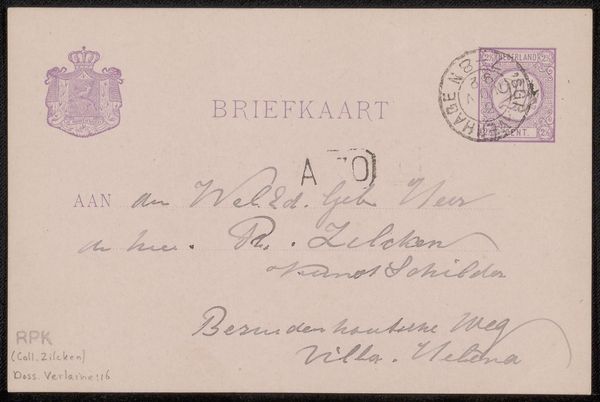
drawing, paper, ink, pen
#
drawing
#
script typography
#
hand-lettering
#
old engraving style
#
hand drawn type
#
feminine typography
#
hand lettering
#
paper
#
ink
#
hand-drawn typeface
#
pen-ink sketch
#
pen work
#
pen
#
handwritten font
Copyright: Rijks Museum: Open Domain
Editor: Here we have "Briefkaart aan Philip Zilcken," possibly from 1890-1895, made by Jan Vrolijk, using pen and ink on paper. The delicate script gives it an air of refined correspondence. I wonder, looking at this through the lens of history, what strikes you most about this simple postcard? Curator: It’s fascinating to consider the socio-political context. In the late 19th century, the rise of postal services democratized communication. What was once a privilege of the elite became accessible to a wider public. How might this simple postcard reflect shifting social dynamics, especially considering Vrolijk's intended audience? Editor: That's a really interesting point! I hadn't thought about it that way. It looks like an everyday item but represents broader changes. The sender meticulously writes an address, including neighborhood: does this emphasize place, belonging? Curator: Exactly! The inclusion of the neighborhood hints at an evolving sense of urban identity. The postal system played a crucial role in connecting individuals within these growing urban landscapes, fostering a sense of community, yet standardizing that interaction via postal rates. How did these new patterns of communication and identification affect social structures, even power structures? Editor: It makes you realize how something we take for granted, like a postcard, could be revolutionary in its time! Thanks, that adds a whole other dimension to how I see it. Curator: My pleasure. Hopefully, our conversation sparks broader investigations into the dynamic interplay between art, communication and social history.
Comments
No comments
Be the first to comment and join the conversation on the ultimate creative platform.
